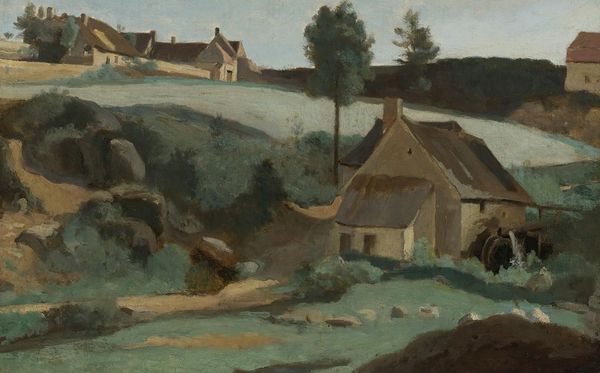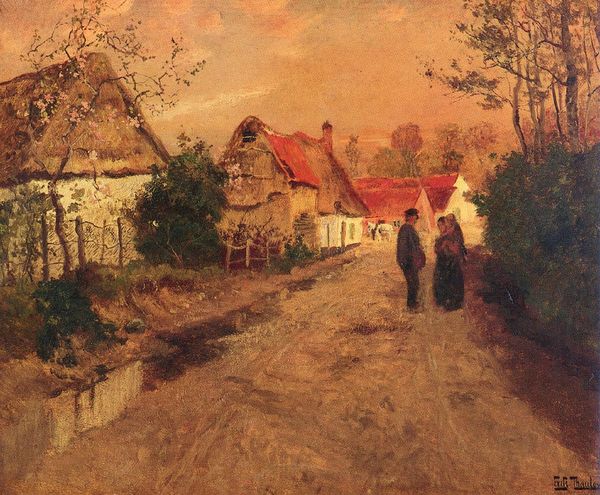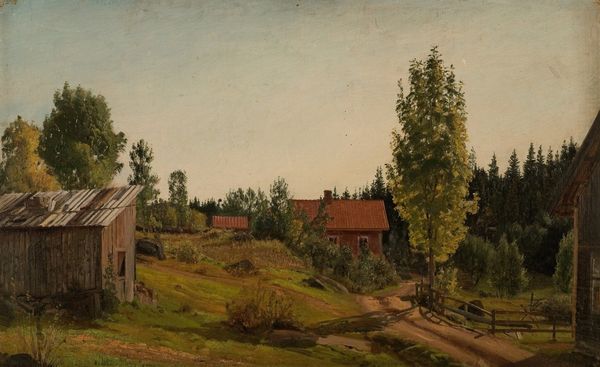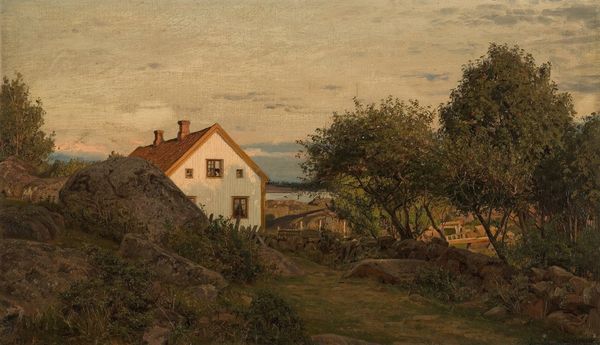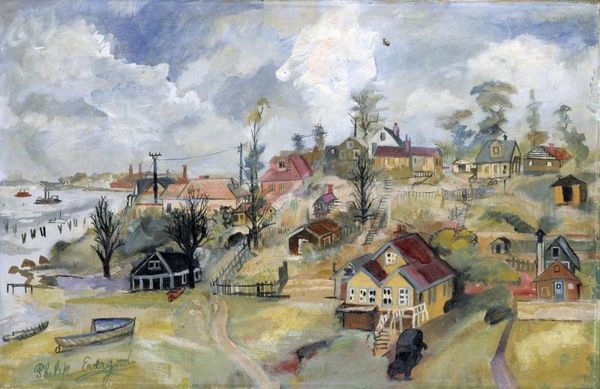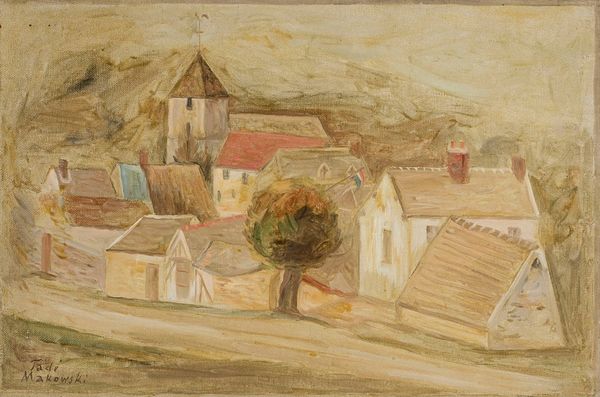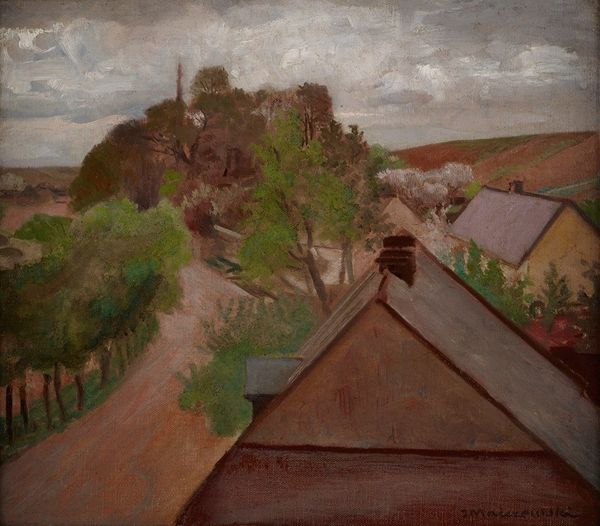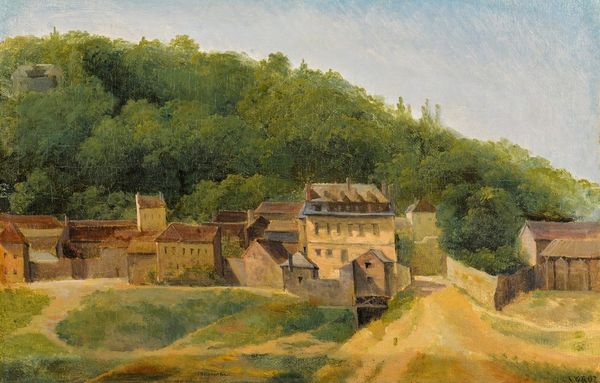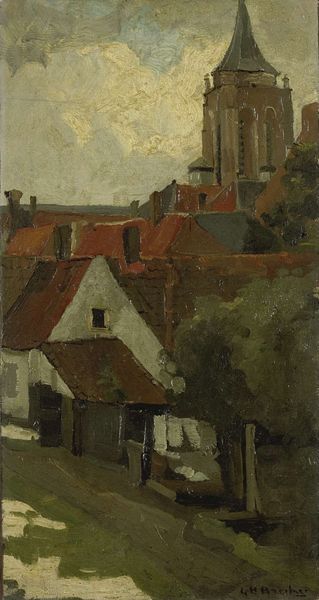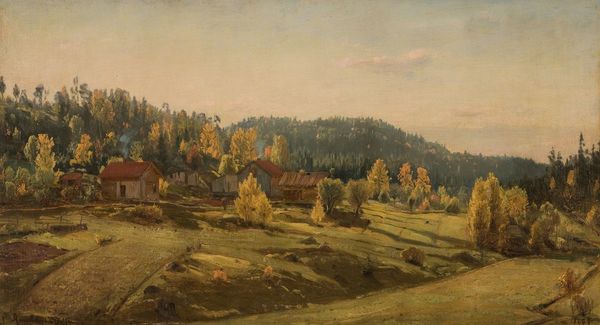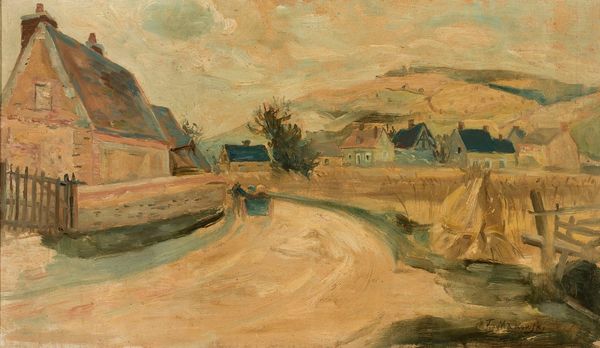
Copyright: Public Domain: Artvee
Editor: This is "Näkökala Porvoosta" painted in 1899 by Magnus Enckell using oil on canvas. I find the painting evokes a sense of quiet observation; the town feels both familiar and distant. What strikes you when you look at this painting? Curator: What immediately grabs me is the materiality of the paint itself. Notice how Enckell applies the oil paint—thickly in some areas, thinly in others. This isn't just about representing Porvoo; it's about the labor of painting, the act of building an image. Do you think about the economic conditions that allowed Enckell to even have access to these materials? Editor: That’s a good point. I was focused on the composition and mood, but I hadn’t considered the resources needed to create this work. How does understanding the means of production affect our interpretation? Curator: It forces us to confront art's relationship to power. Who gets to create, whose labor is involved, and who consumes? Look at the houses; they seem almost stacked, flattened. Does that flattening speak to a certain socioeconomic reality in this Finnish town at the turn of the century? What kind of industries do you imagine would support these structures, the clothing on the figures? Editor: I see what you mean. Focusing on the material reality behind the image makes me think about the labor and social structures present, which might be unseen at first glance. So, it’s less about romanticizing the landscape and more about examining the conditions that shaped it. Curator: Precisely! It's not simply a picturesque scene. It's a document, in a sense, of a specific moment in Porvoo’s history and its relationship to larger economic forces at the time. This viewpoint encourages a critical and thoughtful reflection, moving beyond just appreciating the aesthetic. Editor: Thanks, that's a helpful lens to consider; I will definitely rethink how I look at paintings from now on!
Comments
No comments
Be the first to comment and join the conversation on the ultimate creative platform.
